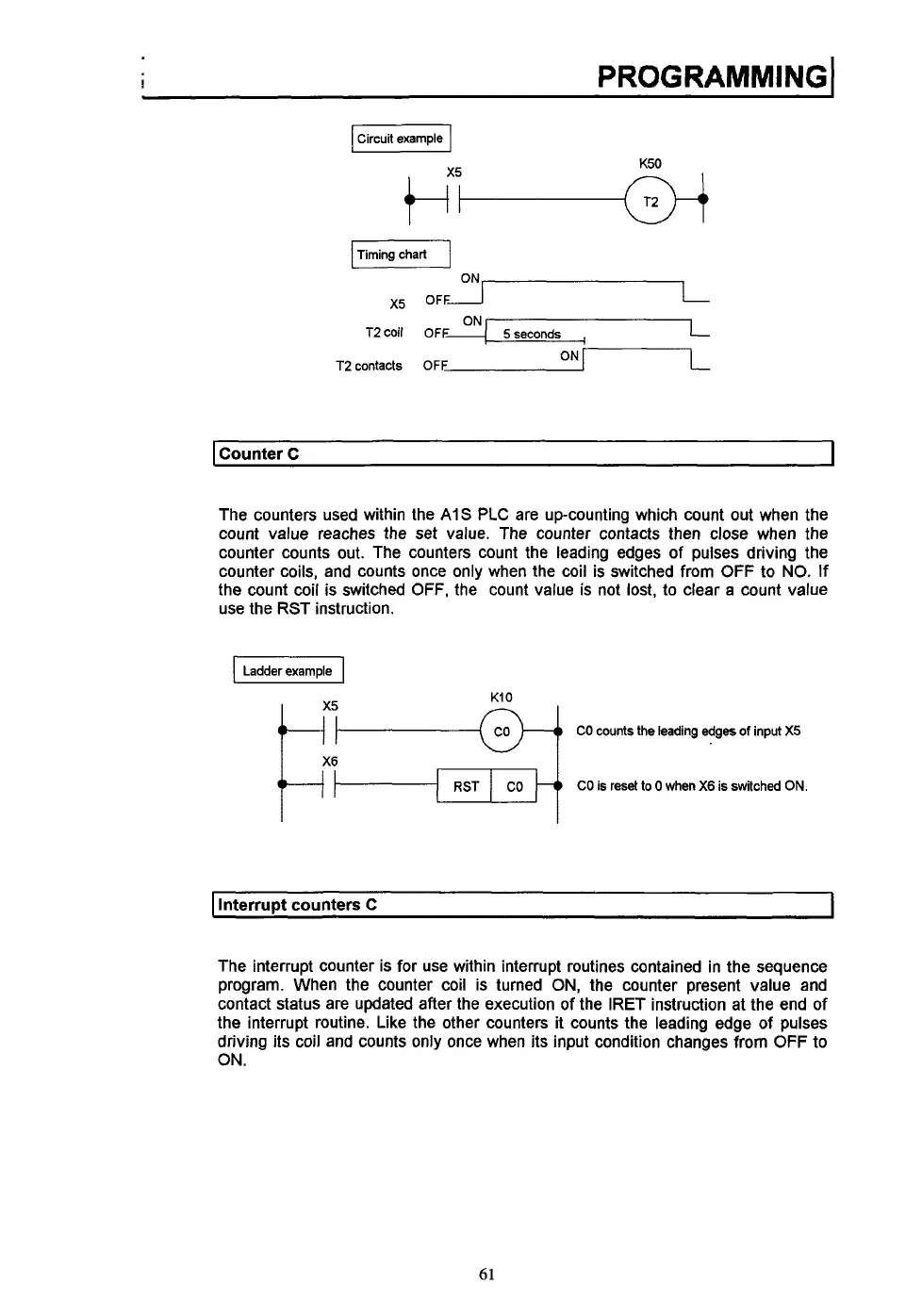!
I
Timing chart
I
ON
x5
OFF-
ON
T2
contacts
OFF
I
Counter
c
I
The counters used within the
AIS
PLC are up-counting which count
out
when the
count value reaches the set value. The counter contacts then close when the
counter counts out. The counters count the leading edges of pulses driving the
counter coils, and counts once only when the coil is switched from
OFF
to
NO,
If
the count coil
is
switched
OFF,
the count value is not lost,
to
clear
a
count value
use the RST instruction.
I
Ladderexample
I
I
I
CO
counts the leading edges
of
input
X5
CO
is
reset
to
0
when
X6
is switched
ON.
I
Interrupt counters
c
I
The interrupt counter is for use within interrupt routines contained in the sequence
program. When the counter coil
is
turned
ON,
the counter present value and
contact status are updated afler the execution of the IRET instruction at the end
of
the interrupt routine. Like the other counters
it
counts the leading edge
of
pulses
driving its coil and counts only once when its input condition changes from
OFF
to
ON.
61

